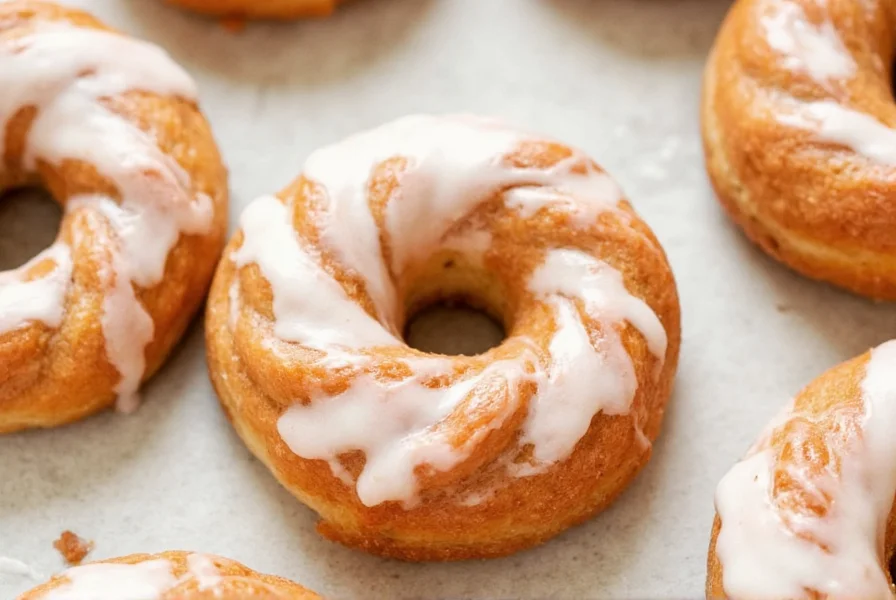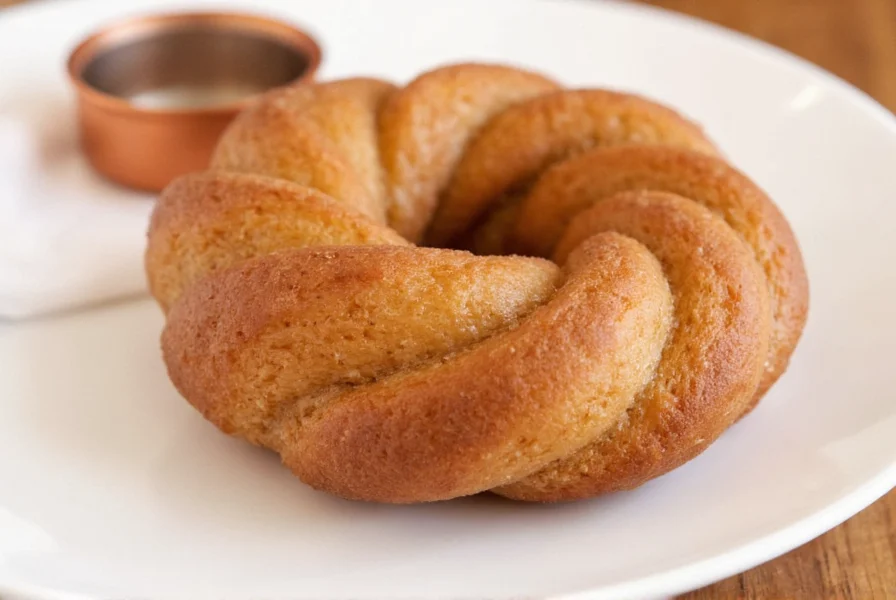When you bite into a perfectly made cinnamon twist donut, you experience a delightful contrast between the slightly crisp exterior and tender interior. This distinctive donut variation has gained popularity in bakeries nationwide due to its visually appealing shape and enhanced flavor profile compared to standard ring donuts. Understanding the science behind the perfect cinnamon twist can transform your homemade donut experience from ordinary to extraordinary.
The Unique Characteristics of Cinnamon Twist Donuts
What sets cinnamon twist donuts apart from their circular counterparts? The twisted shape isn't just for aesthetics—it serves a functional purpose. By creating more surface area through the spiral formation, each bite delivers maximum cinnamon-sugar contact. Professional bakers note that the twisting technique affects both texture and flavor distribution. When properly executed, the dough develops multiple thin edges during frying that become delightfully crisp while the interior remains pillowy soft.
Unlike filled or iced donuts that mask the dough's flavor, cinnamon twist donuts showcase the quality of both the base dough and the cinnamon coating. The best versions use freshly ground cinnamon rather than pre-mixed commercial blends, which often contain excessive sugar and fillers. For optimal results, many artisanal bakeries use a combination of Ceylon and Cassia cinnamon varieties to achieve complex flavor notes.
Essential Ingredients for Authentic Cinnamon Twist Donuts
The foundation of exceptional cinnamon twist donuts begins with quality ingredients. While recipes vary between yeast-raised and cake-style versions, certain elements remain consistent across successful preparations:
| Ingredient | Yeast Donut Version | Cake Donut Version |
|---|---|---|
| Flour | 3-4 cups bread flour | 2 cups all-purpose flour |
| Leavening | 2¼ tsp active dry yeast | 3 tsp baking powder |
| Fat | ½ cup unsalted butter | ⅓ cup vegetable oil |
| Sweetener | ¼ cup granulated sugar | ½ cup granulated sugar |
| Cinnamon Blend | ½ cup sugar + ¼ cup cinnamon | ½ cup sugar + ¼ cup cinnamon |
Professional pastry chefs emphasize that the quality of cinnamon makes a significant difference in the final product. True cinnamon (Ceylon variety) offers a more delicate, complex flavor compared to the stronger, more common Cassia cinnamon. Many top bakeries use a 60-40 blend of both varieties for optimal flavor depth. The sugar coating should be applied while the donuts are still warm (about 2 minutes after frying) to ensure proper adhesion without melting the sugar.
Mastering the Twisting Technique
The signature twist requires precise handling of the dough. After cutting your rolled dough into rectangular strips (typically 1 inch wide and 5 inches long), gently stretch each piece while rotating it between your palms. This stretching motion creates the spiral effect as the dough naturally wants to twist due to gluten development. The key is applying even pressure—too much force creates thin, breakable sections, while too little produces a loose, undefined shape.
Temperature control proves critical during this process. Dough that's too cold resists twisting and may snap, while overly warm dough loses its structure. The ideal handling temperature ranges between 70-75°F (21-24°C). Many professional kitchens use dough retarders to maintain consistent temperature during preparation.
Avoiding Common Cinnamon Twist Donut Mistakes
Even experienced home bakers encounter challenges with cinnamon twist donuts. The most frequent issues include:
- Dough that won't hold its twist - Usually indicates under-proofed yeast dough or improper gluten development
- Soggy coating - Applying sugar while donuts are too hot or using insufficient cooling time before coating
- Uneven browning - Oil temperature fluctuations during frying (maintain 350-365°F/175-185°C)
- Bland cinnamon flavor - Using old or low-quality cinnamon; proper storage preserves volatile oils
For optimal texture, fry cinnamon twist donuts for exactly 1 minute per side in properly heated oil. The twisting shape requires slightly less frying time than standard donuts due to increased surface area. Use a candy thermometer to monitor oil temperature continuously, as fluctuations of even 10 degrees significantly impact results.

Creative Variations for Cinnamon Twist Donuts
While traditional cinnamon-sugar coating remains popular, innovative bakers have developed exciting variations that maintain the essential character while adding new dimensions:
- Brown butter cinnamon twists - Replace regular butter with browned butter in the dough for nutty depth
- Spiced maple twists - Incorporate real maple syrup into the coating mixture
- Apple cider twists - Add reduced apple cider to the dough for autumnal flavor
- Espresso cinnamon twists - Infuse the coating with finely ground espresso powder
For those seeking healthier alternatives, successful adaptations include using whole wheat pastry flour for part of the blend and reducing the sugar content by 25% while increasing cinnamon proportionally. Gluten-free versions work best with a blend of rice and tapioca flours that mimic the stretchy quality of wheat gluten.
Serving and Storage Recommendations
Cinnamon twist donuts deliver peak enjoyment when consumed within 4-6 hours of preparation. The twisted shape's increased surface area causes them to stale faster than traditional donuts. For optimal freshness, store in an airtight container with a slice of bread, which helps maintain moisture balance through starch retrogradation principles.
When reheating day-old twists, a 15-second burst in the oven (300°F/150°C) restores some crispness without drying out the interior. Avoid microwaving, which creates uneven texture. For longer storage, freeze uncoated twists then coat after reheating for near-fresh quality.











 浙公网安备
33010002000092号
浙公网安备
33010002000092号 浙B2-20120091-4
浙B2-20120091-4